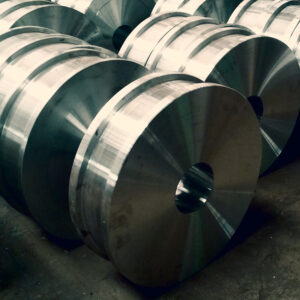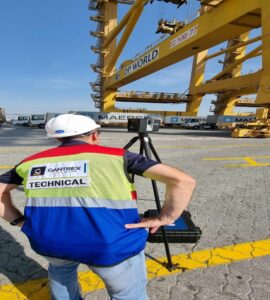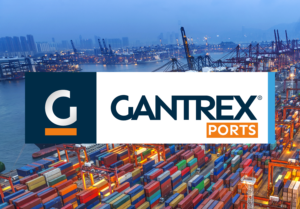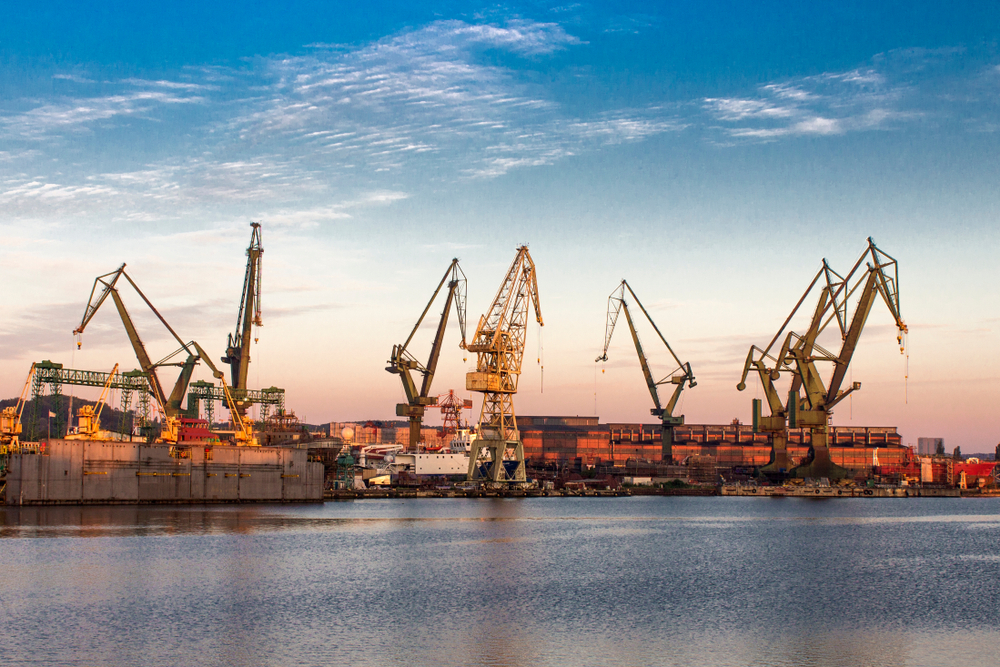Gantrex Introducing Series – Dec 2020
“Loyalties built on relationships last forever”
As we bring you the last in the Introducing Series for 2020, it seems only fitting that, as we come to the end of a year, we also showcase two colleagues who are approaching the end of their lengthy careers with Gantrex. In this article we hear from Art Avlon and Lal Ajwani, who between them having dedicated almost 70 years to Gantrex, are able to share their insights with us, looking at what has been and also what they feel is to come for our ‘small big company’.
Would you share with us where your career journey with Gantrex first began?
LAL: I started working for Gantrex on July 2nd, 1990. At that time the Gantrex operation in my area was divided between Gantrex Canada, being responsible for Canada, South and Central America, the Caribbean, South East Asia, South Africa and Australia, and a Gantrex US team who looked after the US operations. My co-author of this piece, Art, was Sales Manager for the US at the time.
At the time I joined, Gantrex Canada was also a JV partner in Gantrex South East Asia and I was hired to head Gantrex SEA which had recently moved its office from Hong Kong to Singapore. I had met the President of Gantrex while working for another company and had casually mentioned to him my interest in moving to South East Asia. And so a plan was formed!
ART: After graduating from Carnegie Tech, now Carnegie Mellon, in 1966 with a BS in Civil Eng., I spent four years on a drawing board with Harbison Walker and ten years selling industrial waste treatment systems with Envirotech. But something was missing, and I very much wanted to build a career path with a company that had a need for a salesman with an engineering background. I remember receiving a call from Peter Levey, President of a company called Gantrex. We sat in the lobby of the William Penn hotel in Pittsburgh for over two hours. As we conversed, I was trying to resolve how anybody could make a living selling $15 rail clips. I didn’t know much about the company, but I was captivated by Peter’s entrepreneurism and enthusiasm for the future of his company. I actually made my decision based on the sincerity of the man with whom I was interviewing and, in late September 1981, I joined Gantrex as Sales Engineer.
Both having stayed with Gantrex until retirement, what is it about this company that has kept you so loyal for decades of your career?
LAL: I have always been part of Gantrex Canada. I started off as a Product Manager and, in anticipation of moving to South East Asia, also traveled 4 times a year to South East Asia and India, stopping enroute in Italy, England and Belgium, to meet suppliers and partners. While the permanent move to Singapore never really materialized, I had opportunities to manage other products such as SGM magnets, Oleo bumpers, epoxy grout, soleplates and anchor bolts. I traveled all around the US and Canada for product support, and also inherited a sales territory in Canada and the US, developing a solid level of business in Michigan and Ontario. Gantrex Canada was an easy business to work for and to continue my career with. The atmosphere and culture were so supportive, it was in many ways like a family. My boss, Peter Levey, also spent a lot of time with me and shared his experiences and ideas and I am pleased to say that all these years later we remain good friends.
Can you call to mind what those early years at Gantrex were like?
ART: I like to refer to the first half of my employment (1981-1999) as the “Golden Years”. It was an exciting period, as our customers had a thirst for knowledge as to how to keep their cranes and runways safe and productive. Gantrex had innovative, tested products, and end users, crane manufacturers and consultants were anxious to learn about our product features and benefits. The metals industry was the primary contributor to our business, but beginning to feel the pressure of cleaner air and water requirements. There was little or no return on investment for purchasing air scrubbers, clarifiers, thickeners and filters. To add to their woes, unions were draining management, and we began to see cheap steel being ‘dumped’ on the U.S. market.
The steel and aluminum industries required repairs to their cranes and crane runways in order to continue to compete. Gantrex offered them an engineered soft mount system. By staying close to maintenance and engineering teams in these plants, as well as the consultants who wrote the specifications, strong and lasting Gantrex relationships were developed.
Gantrex soared through the late 80’s and 90’s, entering the installation. The Port, Pulp & Paper, Power, and ASRS industries were booming, and there was a demand for engineered rail support systems for ship-to shore cranes, log-handlers, loaders, unloaders, stackers, reclaimers, and ASRS applications.
LAL: From my side, one of the things that I always like to look back on is the culture that was in place throughout a period of such rapid change. As Art explains, the Gantrex brand was growing market share and building lasting relationships with major partners, but the supportive, friendly and collaborative culture that we see today was firmly embedded back then.
Since those times, what would you say have been the most significant changes within the business that you see today?
LAL: As the company has evolved and grown, the structure has become more formal with more layers of authority. This presents challenges with regards to communication as would be the case with any scaling business.
ART: Over the years, there have been significant changes, many of which have been cultural. I would agree, as with growth comes change and as a business we have had to learn to adapt. One of the greatest human strengths is our ability to adapt and evolve. In my mind, it’s always best to look forward rather than backwards. I believe we’ve accepted and adapted, and look favorably towards the future of the company.
You have played a huge part in the continued success of Gantrex, now being market leader in many territories. What do you consider to be the secret behind our success?
LAL: We have a niche product in a pretty large market. As I used to tell my friends, when I first joined, we are a ‘small big company’. I believe our success, at least in Canada, is that we have taken the trouble to learn about how the product is applied and also learnt about the environment the product is used in. We understand steel and civil structures, we have an engineering department and we are constantly trying to improve. We travel to sites, get on top of cranes and back up what we say with proper installation.
ART: For me it’s also about our people. Our leadership team deserves a great deal of credit for directing our business, with a clear emphasis on technology, marketing, communication and attention to the bottom line. Gantrex now has a portfolio of tried-and-proven products, a reference list of world-wide installations and exciting opportunities to develop and grow. Our CEO has worked closely with our business unit to develop a strong, capable North American business atmosphere and, importantly, he is not afraid to invest in our future.
If you had to choose one project that you will remember as making you most proud what would it be?
LAL: My favorite project is a complex one. In 2005, I was the Sales Manager as well as the Operations Manager for Canada. This included everything but Accounting. We had no salesmen, just two agents – one in Ontario and one in Montreal. The West coast was being handled by a US salesman. We received a large inquiry for an aluminium smelter in Iceland. I negotiated the deal with Bechtel Montreal – it was eventually worth over a million dollars, which was a large order in those days. It included clips and tiebacks and part of the condition was that we shipped the first 4000 clip lowers to China within two weeks. We had a forging press in Ajax and we used to make the clips in house. The order was placed in two parts, with the clip lowers being the first part. Bechtel used to have very detailed commercial conditions which I declined and asked them for a one-page order with only relevant terms such as payment and delivery. They agreed with this and said they would formalize the rest of the order with us after we shipped the clip lowers. A few days after receipt of the order I flew to Florida for one of our four annual sales meetings. I flew over on Friday and the meeting was to start the following Tuesday. On Monday morning, I got a call from our Maintenance Manager to inform me that the clip forge had broken down and it would take 5 to 6 weeks to repair it. Keeping in mind the urgent delivery of the first batch I had to scramble to find an alternate source. I managed to find one, got them to modify some tooling for our special clips and delivered just one week behind schedule. Bechtel and their customer were both very pleased and expressed their satisfaction and even allowed us to publish a brief internal article. We received the rest of the order and also went on to receive an order from Bechtel for another plant in Norway.
ART: That’s a tough question to answer! Back in 1985, Port Everglades embarked on a new 2,700’ berth. In addition to our standard rail-on-concrete products, there was also an opportunity to sell additional products. I had established good contacts with Port crane maintenance and engineering. Our principal supporter was Chris Novack, who was responsible for engineering and construction. Unfortunately, there was a five-year environmental hold-up to find a feeding ground for manatees. As you can imagine, I took a lot of ribbing, and we referred to the project as Port Neverglades.
In 1990, we finally received this large order for the Gantrex products and installation. In that year, our management group was invited to attend a sales meeting in Sweden. A week before departing, I received a purchase order for a little over $800,000 from the Port for 2,700’ of cable protection. In addition, the Port had specified our “Pull and Store” reels for seven Korean Samsung cranes.
On the boat trip from Stockholm to Helsinki, I presented my CEO at the time with the order. It caught them all by surprise, and it helped solidify the relationship between the two companies.
Looking ahead now, what do you think the future looks like for our business?
LAL: The future should continue to be bright. There are many opportunities in installations, surveys, engineering studies as well as relatively untapped industries in North America such as railways and ASRS systems.
ART: I also anticipate that the future will be a bright one for Gantrex once the problems associated with the pandemic go away. Excellent leadership exists, along with proven products, bonafide technical back-up and numerous material supply and installation references. There is a younger group of salesmen eager to succeed. The leadership and sales management strategy, both intent on securing orders, will guarantee many successes. The Gantrex installation group, with new leadership will also continue to grow.
After such continued dedication to the development of our brand and reputation what would you like your legacy to be?
ART: When I look back on my many rewarding years with Gantrex, I often remember individuals who helped shape my life, both professionally and personally. In many cases I doubt these people were even aware of the impact they had. Similarly, I would like to think that somebody with whom I’ve come in contact during my 39 years with Gantrex might feel that, in some way, I’ve been a positive influence in their life too.
LAL: For me, it’s all been about teamwork and appreciating that all contributions are valuable. If I were to be remembered, I would like it to be about how I contributed to solving problems.
Thinking now about the next generation of Gantrex professionals, what advice would you give to them so they can enjoy a career such as you have achieved?
LAL: Number one for me would be to spend more time in the field, on top of cranes, at sites, in the manufacturing plants and with our engineers. These days it is easier to work from a desk but nothing will equip you and give you the insight you need more than getting out in the field. This is equally applicable to the sales team, the order desk, the quality control people, the marketing and engineering teams as well.
ART: I agree totally. The younger sales professionals are equipped with technological capabilities that never existed years ago. They are more computer-savvy, access information more efficiently and can communicate more effectively. However, what may be missing is the development of personal relationships with our customers. Emails, telephone calls and letters are certainly important, but the personal relationships a sales person develops with key customers is critical. Loyalties built on relationships last forever!









